The most revered Russian hero. Ilya Muromets
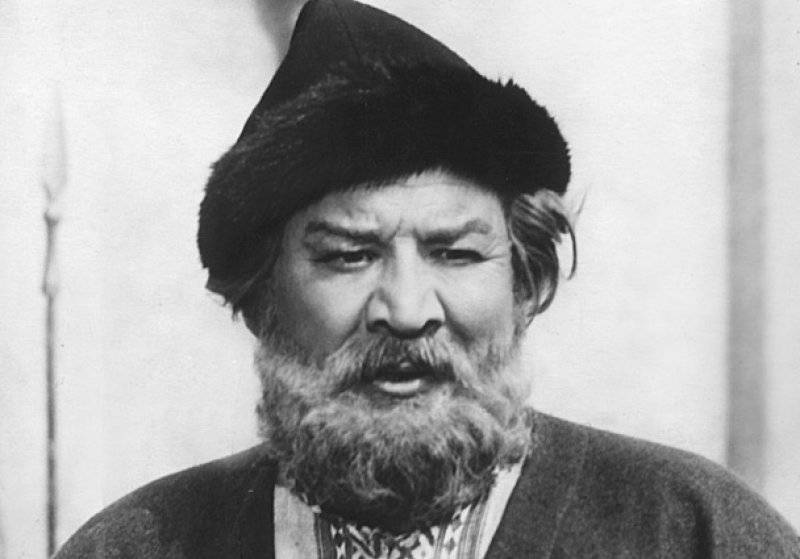
The first mention of Elijah in a historical source
The researchers have done quite a lot of work and obtained very interesting results. For example, it turned out that for the first time in the historical document the name of Ilya is mentioned in 1574 of the Headman of the Belarusian city of Orsha Kmit Chernobyl, complaining about the border service and inattention to their needs, wrote to the authorities: “The time will come, there will be a need for Ilya Muravlenin”.
Since Orsha’s fortress was then Lithuanian, it can be concluded that in the second half of the 16th century, Ilya Muromets was a nationwide hero on the territory of all the lands of the former “Kievan” Russia - Moscow State and the Ukrainian and Belarusian regions that had departed to Lithuania. Because the headman Orsha, who is demanding an increase in funding, would hardly have mentioned in his letter a “alien” or even a hostile bogatyr.
Birthplace of the hero
It must be said that modern researchers are skeptical of texts telling about the birth of Ilya in the famous village of Karacharov, that near Murom, where, supposedly, even the direct descendants of this hero by the name of Guschina live. It has long been proven that this village was founded in the 17th century, and, therefore, its natives cannot have anything to do with the events of centuries ago. Yes, and with geography in this case, there are continuous discrepancies. Ilya travels from Murom through Chernigov to Kiev by “an expensive straight-line traveler” - as a result, near the Smorodina River: it is on its banks that the Nightingale the Robber leaps near the Black Mud. But the epic Currant is the left tributary of the Dnieper Samara (Sneporod). It flows through the territory of the Donetsk, Kharkiv and Dnipropetrovsk regions, to the south of the "direct" route to Kiev. Now, if we assume that the hero’s homeland and the starting point of his journey was the city of Karachev in the modern Bryansk region, the “canonical” route of Ilya looks quite possible.
But there are lesser known versions of the epic, according to which Ilya arrives in Kiev not through Chernihiv, but through Smolensk, or through Sebezh, and even through Turov or Kryakov (Krakow). Sometimes Ilya is called not Muromts, but Muravts, Moravlins and Muravlyanin. This was the basis for assumptions that the city of Moors of the Chernihiv region or Moravia (a region in the modern Czech Republic) may be the birthplace of the bogatyr. The fact is that in the Russian sources up to the XVI century, the Moravian princes are clearly perceived as one of the Russians. And the Nikon Chronicle calls the Moravians precisely the Moravians.
Now, many historians are inclined to believe that epic stories about Illya Muromets originally appeared in Kiev, and only then gradually, together with immigrants from more southern lands, penetrated to the northeast of Russia. Perhaps, the descendants of these migrants eventually replaced in the texts the distant and half-forgotten Moravia, Moors or Karachev with friends and friends of Moore and Karacharovo.
In defense of the “Murom” version, it should be said that VF Miller believed that the image of Ilya of Murom merged the features of two different heroes — the “north-west”, who received power from Svyatogory, and the “north-east” —the Murom sick peasant, healed with Kaliki. In this case, many contradictions disappear.
By the way, the epic about Ilya Muromets and Nightingale the Robber is interesting because there is a hidden reference to the time of writing in her text. The fact is that the Novgorodians were the first to come to Zalessky Rus from the north-west. And only then in the impassable Bryn forests began to clean the roads to Kiev and Chernigov. It happened approximately in the middle of the XII century - under Vladimir Prince Vsevolod the Big Nest: the author of the “Lay of Igor” laid particular hopes on him for the protection of the Russian land from the Polovtsy. And from here, from the Zalessky Rus, according to the narrators, his main protector should come to Kiev.
Novgorod trace: image development
Sometimes Kiev bogatyr Illya instead of traditional nomads faces completely different opponents. In one of the epic versions of the three trips of Ilya of Murom there are such lines:
[quote] surrounded Ilya of Murom
In the hoods people are black -
Crow covers,
Hoodie long -
Know the monks is all al priests!
Persuade the knight
Throw Russian Orthodox law.
For treason
All promise sulu great,
And honor, and respect ... "
After the failure of the hero:
"Bashlyki undress here,
Hoodies are thrown off -
Not monks, black
Not priests dolgopoliki,
Latin warriors are standing -
Sword Giants. [/ Quote]
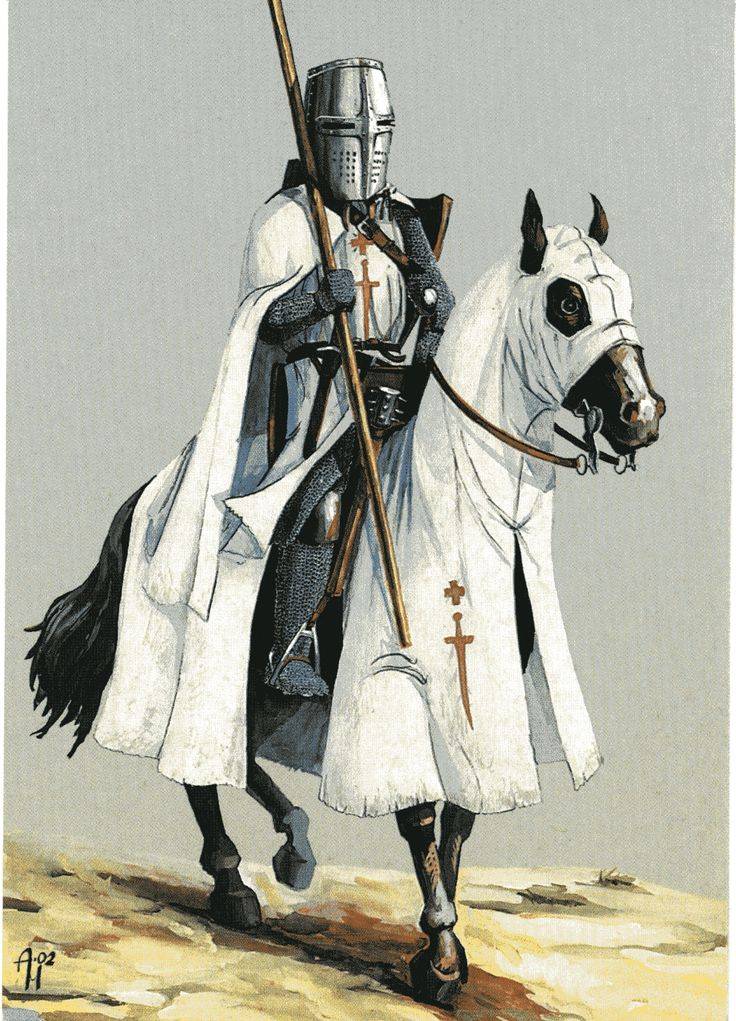
Before us is a fairly realistic description of warriors of knightly orders, even the name of a particular order is given. And these are already opponents of the Lord Novgorod the Great. This story could have appeared when “refugees” from the lands of the southern principalities that were constantly ruined by the Polovtsi came to Zalessky Rus, originally inhabited by Novgorod. After reviewing their "songs", the Novgorodians could compose their own - about the new adventures of the hero they liked.
Prototypes of Ilya Muromets
But who could serve as a historical prototype for the image of this hero? Different assumptions were made. N.D. Kvashnin-Samarin, for example, identified Ilya of Murom with the bogatyr Rogdaem, who allegedly went alone against opponents of 300 and whose death was mourned by Vladimir Svyatoslavich. In the Nikon chronicle under the 6508 (1000) year you can read:
[Quote] "Cease to be Ragdai the Bare, as thou sewed upon three hundred warriors." [/ quote]
N.P. Dashkevich, finding in Lavrentiev’s chronicle under 1164 a reference to a certain Ilya — Suzdal after Constantinople, recalled the trip of the epic hero to Constantinople. D.N. Ilovaisky talked about Bolotnikov's associate - the Cossack Elika Muromets (this, by the way, is a direct indication of the time of writing such epics - the Time of Troubles). But most researchers consider the image of Ilya of Murom to be collective.
Elias von reuisen
Traces of "our" Ilya Muromets can be found in foreign literary sources. Two Western European epic poems (Ortnit and The Dietrich of Bern Saga) have reached our time, in which there is a hero, called Ilya (Ilias) from Russia (von Reuisen). True, Russian researchers A.N. Veselovsky and M.G. Khalansky, although they came to the conclusion that the legends about Ilias fell into the German epic from Russian epic songs, they decided that the source for the poem Ortnit was the epics not about Ilya Muromets, but about Volga Vseslavich. In the adventures of this hero, there are close parallels with the plot of this German poem. In addition, the authors did not rule out the use by Germans of echoes of folk legends about the Scandinavian hero Helga - the beloved Valkyrie Hild (battle) Sigrun, who was killed by the spear of Odin and became the leader of the Eynherian (Valhalla warriors). This is the brother of the famous Sigurd-Siegfried (who defeated the dragon and bathed in his blood). However, “Helgi” in those times was often not a name, but a title meaning “the Prophetic leader”, “the Leader driven by spirits”. And many kings who went down in history, like Helgi, bore a different name. In Russian history there is a prince named “Helga” twice - this is the famous Prophet Oleg (Oleg and Olga are Russian versions of this name): the Slavs literally translated the title of prince into their language. In their assumptions, Veselovsky and Khalyansky were based on the fact that in various versions of these poems the hero is also called Iligas or Eligast (and it is literally one step from Eligast to Helga). Some have suggested that Ilias von Reuisen could be our Prophetic Oleg.
But back to the above German poems.
So, the first of them, Ortnit, a southern German, from the Lombard cycle, was written in the first half of the 13th century (around 1220 — 1230).
Here, Ilias is the uncle and mentor of King Ortnit of Lombardy, with whom he makes a successful campaign in Syria in order to get King Mahorell’s daughter. It is curious that in one of the epic versions of the marriage of Dobrynia Nikitich there is a similar plot: to bring a wife who “pulled off” Dobrynya from the saddle (with the help of a lassan) at the first “date” ... Of course, Ilya Muromets.
In the poem "Ortnit" states that the main city of Russia was Holmgard. This is consistent with the information of other, already historical sagas, which report that the best part of the Gardariki of the times of St. Vladimir and Yaroslav the Wise and its main city was Novgorod.
The second poem, the hero of which is Ilias - recorded in Norway near 1250. The Saga of Dietrich (Tidreke) Bern (genre - the saga of ancient times, the text indicates that it is composed of ancient German legends and songs).
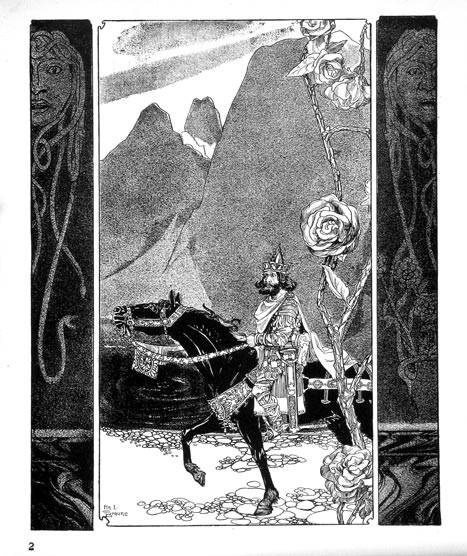
Curiously, some of the information and plotlines of this poem echo the data given in the Novgorod Ioakimovskaya chronicle (not very reliable source of the XVIII century). Both this chronicle and Saga ... relate the lifetime of the “ancient prince Vladimir” (King Valdimar) to the 5th century. Consequently, in the V century the prince’s best knight, Ilya (Earl Ilias), was supposed to live.
So, in the "Saga of Dietrich Bern," which served as one of the main sources for the "Song of the Nibelungen", tells about the events of the 5th century. AD - This is the era of the Great Migration. The main characters of this work are the Gothic king Dietrich (Theodoric) and the leader of the Huns Attila, who, in fact, were not contemporaries: Attila died in 453, Theodoric was born in 454. Here Ilias is a Greek Jarl, the son of King Kong, Gernita, the brother of Vilkin's king, Osantrix, and the Russian king, Valdimar. Sometimes Ilias von Reuisen is not the brother, but the uncle of the “Russian king Valdimar”, who by most of the researchers correlates with the prince Vladimir of Russian epics. But perhaps it is a question of the Danish king Valdemar I, born in Russia, the great-grandson of Vladimir Monomakh. Ilias von Reuisen is called in the saga "the great sovereign and the powerful knight", and it is stated that he was a Christian (in the V century!).
In this saga it is told, among other things, about joint campaigns of the Huns and is ready against King Kondi Valdimar. In one of the main battles with the Goths, Ilias, Jarl Valdimar, knocked off his best opponent's warrior, Hildbrand, after which the Goths retreated. But six months later, the combined forces of Attila and Dietrich laid siege to Polotsk and took him after the 3-month siege. In the decisive battle, Dietrich Berne delivered a mortal blow to Vladimir, the Russians were defeated, but Attila retained Ilias his hereditary possessions.
Remember the opinion of Miller? Ilias von Reuisen is clearly the northwestern Ilya: the one that received his power from Svyatogory. Descended from a peasant family, Ilya from Murom is completely different from the jarl-warrior of German poems.
Interestingly, Saxon Grammar in Acts of the Danes (in the part that is based on the epic tales of the Danes) also mentions the war with the Huns and Polotsk. In one of the battles in the territory of the future Russia (which Saxo calls Holmgardia) the Huns, according to him, suffered a heavy defeat: “Such piles of people were killed that three main rivers of Russia, paved with corpses, like bridges, became easily passable for pedestrians”.
And here is the unexpected testimony of Paul Jovius Novokomsky from 1525 year. He claims that the Russian ambassador in Rome, Dmitry Gerasimov, was asked:
[Quote] “Does not the Russians, some word of mouth from ancestors, have any news of the Goths, or some recorded memory of this people, who overthrew the city of Caesars and the city of Rome a thousand years before us.” [ / quote]
Gerasimov replied:
[Quote] “The name of the Gothic people and the king of Totila is well-known among them and many people gathered together for this campaign and mostly before the other Muscovites ... but all were called Goths because the Goths who inhabited the island of Iceland or Scandinavia (Scandauiam) were instigators of this campaign. "[/ quote]
In our time, one can only guess: in fact, in the XVI century, the memory of the grandiose campaigns of the Epoch of the Migration of Peoples remained in Russia, or did Gerasimov simply come up with all this in order to give more significance to his person and to the state he represented?
Some historians suggest that the plots of Russian epics could come to Germany from the writings of Tithmar of Merseburg, where the war of the children of Vladimir Svyatoslavich who died in 1015 is described. Others believe that information came from the people of the German wife of Prince Svyatoslav Yaroslavich (1027-1076) - Countess Oda Stadenskaya (relative of Emperor Henry III and Pope Leo IX). According to the third version, they learned about the epic Ilja and Vladimir in Germany through German merchants who visited Russia in the 11th — 12th centuries.
Death of Ilya Muromets
The storytellers are unanimous in their opinion: Ilya was not destined to die in battle, while in a number of texts there were indications that Ilya was not a gift or a “curse”. Only once does he end up on the brink of destruction - when his own son, Sokolnik, is born, born by a woman from the Alien world - Zlatigorka or, in another version, by Goryninka (is it not one of those places from where the Serpent Gorynych flew to Russia?) . Sokolnik's peers from their childhood teased them with a “sampler” and “fatherlessness”, and therefore he hates his unknown father.
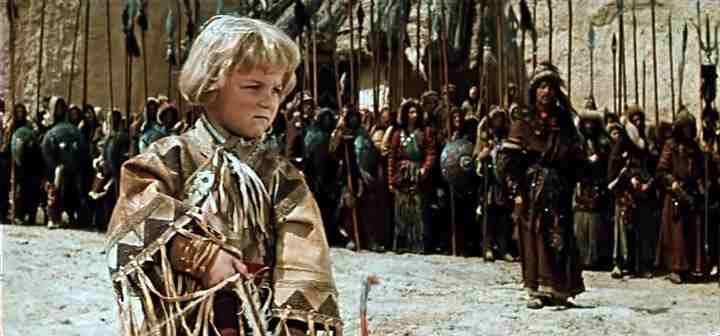
In 12-year-old Sokolnik, called the “evil Tatar”, is sent to Kiev. When his son goes on a campaign, his mother asks him not to engage in battle with the Russian bogatyr Ilya Muromets, but her words lead to an unforeseen result: now Sokolnik knows the name of his father and is eager to meet him "in the Field" - of course, not to conclude in kindred hugs. He does not go on his way alone: he is accompanied by two wolves (gray and black), a white gyrfalcon, as well as a nightingale and a morning bird, who seem superfluous in this harsh company. However, it turns out that they:
[Quote] Flit from hand to hand
Wearing whistles from ear to ear
Pursue, well-done fellows travel. [/ Quote]
In general, they entertain a teenager on the road - they have not yet invented audio players.
The power of Sokolnik over animals and birds indicates that it belongs to the wizarding world and underlines the hostility and alienity for Russia.
The border service in Russia, if you believe this epic, was not put in the best way, because the heroes slept the foreign knight, finding him only thanks to the news of a thrush or a crow — when Sokolnik, not noticing the outpost, had already driven past them towards Kiev (even which is especially outrageous, “I didn’t put the roadside penny into the treasury”!). It is necessary to catch up, but whom to send for the intruder, whose horse is like a fierce beast - fire is bursting out of his mouth, sparks are flying from his nostrils, and he himself is playing with a huge club like a swan feather, and the arrows, fired for fun, catch on the fly?
After some thought, Ilya Muromets rejects the candidacies of the “Zalashanyev men”, the seven brothers Srodovich, Vaska Dolgopologo, Mishka Turupanishki, Samson Kolybanov, Grishenka Boyarsky (in different versions of the epics are called different names) and even Alesha Popovich. Sends Dobrynya Nikitich, who "knows with the hero he will move together, he knows the hero and the honor to give." That is, decides to first try to negotiate with an unknown hero in an amicable way. Sokolnik did not enter into negotiations, but the matter did not come to a duel:
[Quote] As a good young man of a hero heard,
He roared himself like a wild beast
From the roar of youth
Chipped cheese ground
Poured water from the rivers
Good horse Dobrynin stunned,
Dobrynya himself frightened on horseback,
I prayed to God the Lord
Mother of the Most Holy Theotokos:
Take me away from an imminent death, Lord! [/ Quote]
In another version, Sokolnik took Dobrynya by the curls and threw him on the ground, and then sent to Ilya with a mocking message in which he advised him not to be replaced ... (not quite a decent word for the letter “G”), but to come to him “to recover”.
Realizing the scale of the threat, Ilya Muromets goes to battle with an alien warrior, fights him without a break for three days, and eventually suffers defeat: falls, but according to one version, an appeal to Mother-Raw Earth, according to another - a prayer, gives him new strength. However, having found his cross on Sokolnik’s chest, Ilya recognizes his son in him, and is very happy not only at this meeting, but also because he was not “rotten” (that is, not a pagan), but Orthodox, therefore, his campaign against Kiev can be considered a mistake and an absurd misunderstanding. Now, Illya believes, having found a father, the son will become his successor and the main defender of his new homeland - Russia. But Sokolnik, who until then considered himself an invincible fighter, is not at all happy about such a happy ending. The feeling of humiliation joins the former hatred, and on the same night he tries to kill sleeping Illya — however, the knife falls into a golden cross “weighing three poods”.
But there is another, even more sad version of this epic, according to which, Ilya, having learned that the son of all 12 years, sends him home, to his mother, offering to gain strength and come to him when 12 few more years pass. In this case, Ilya, alas, himself could provoke the subsequent tragic events. Because the young bogatyr, offended by such neglect, is indeed going home, but only to kill the “dissolute” mother - because she once associated with his father who had cruelly humiliated him. And then - again goes to Russia, and tries to kill sleeping Ilya.
Then the plot lines of the two epic versions converge: having decided that the son who consciously tried to destroy his father is not worthy of life, Illya kills him, after which he goes to church - for repentance.
Perhaps, it should be said that there are similar plots about the confrontation of a father with an unrecognized son in the German epic (the Hildebrand saga) and in the Iranian legend about Rustam and Sukhrab.
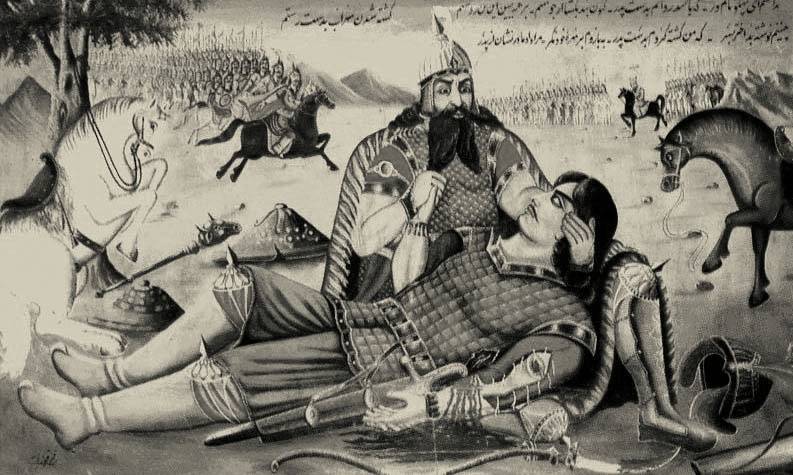
Ilya Muromets dies after a terrible battle with the dead, which is told in the epic of the Kama massacre. At first, the Kiev heroes, as usual, defeat the Tatar army. And, puffed up, declare:
[quote] Already, that to us that force is wrong?
We would have a ladder to heaven -
We would crush all the power of heaven. [/ Quote]
Or, in another version:
[Quote] There would be a ladder to the sky,
We would add all the power of heaven. [/ Quote]
In some texts, such words are uttered by the participants in the battle, heated with victory, in others - the younger warriors who were late for the battle, or stood by the wagon train in combat guard. Ilya tries to stop boasters, but late:
[Quote] Here Kudrevankova again rose:
Who was beaten and cut in two - it became two Tartars,
Good fellows gathered again,
They fought and fought for six days and six nights
They how much Tatars chop - no loss. [/ Quote]
Finally, “they were terrified of this silushka, they left on the edge of it,” but not far: they turned into stone with their horses at the neighboring mountain. One Ilya of Murom reached the city of Kiev, where he, too, turned to stone - near the city walls.
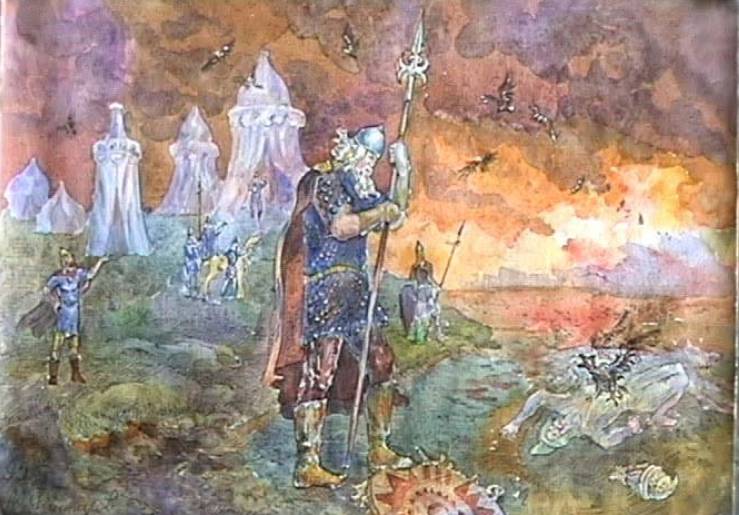
Return to documents
Now we will return to more reliable sources and try to continue the search for traces of Ilya Muromets in historical documents.
Historians have at their disposal the famous testimony of Erich Lassot, ambassador of the Austrian emperor Rudolph II, who in 1594 described the tomb of Ilya Muromets in the aisle of the St. Sophia Cathedral in Kiev:
[Quote] “In the other chapel of the temple outside was the tomb of Ilya Morovlin, a famous hero or hero, about whom many fables are told. This tomb is now destroyed, but the same tomb of his comrade is still intact in the same chapel. ”[/ Quote]
So, the tomb of the alleged Ilya Muromets in the aisle of the St. Sophia Cathedral was already destroyed at that time, but local monks explained that the remains of the hero were transferred to the Antoniyevo cave of the Kiev-Pechersk Lavra. However, the stories about such a reburial should be recognized as legendary, because in the cave of Lavra there are mummified remains of an alleged hero. Consequently, this man was buried in this cave immediately after death. Otherwise, they would not be preserved. So, in the chapel of St. Sophia Cathedral and in Lavra various people were buried. Unless, of course, decide that the records Lesota can be trusted. After all, he still didn’t talk about St. Sophia Cathedral. For example, about some magic mirror:
[quote] “In this mirror, through magical art, one could see everything that was thought about, even if it happened at a distance of several hundred miles.” [/ quote]
But, if we compare these two versions, information about the burial of Ilya Muromets in the Lavra cave seems to be more reliable. First, the burial in the chapel of St. Sophia Cathedral was, nevertheless, for Illya “not according to rank.” Secondly, in some versions of epics about the death of Ilya of Murom, it is explicitly said about the “holy relics” of the hero:
[/ quote] "And the relics and the saints became"
"Even today, his powers are imperishable." [/ Quote]
At the beginning of the XVII century the relics of Ilya of Murom were seen by the Old Believer John Lukyanov. He claimed that the fingers of the warrior’s right hand were folded in a double-cross sign, which, in his opinion, proved the pre-Donicon church rituals.
In 1638, the book of the monk of the Kiev-Pechersk Monastery Athanasius Kalnofyysky, who claimed that Ilya Muromets died in 1188, was published by the same author. once the enemies caught putting on their boots. Not finding another weapons, he with the help of boots and strayed, for which he received his nickname.
In 1643, Ilya Muromets among the 70 saints of the Kiev-Pechersk Lavra was canonized. In the Prologue and Orthodox calendars the memory of “St. Ilya of Murom in the 12th century of the former” is celebrated on December 19 (January 1 in a new style).
In 1988, a study of the alleged remains of Ilya Muromets was made by an interdepartmental commission of the Ministry of Health of the Ukrainian SSR. It was found that they belong to a man whose age at the time of death ranged from 40 to 55 years. His height is 177 cm (this is the largest skeleton of the caves), the estimated time of death is XI-XII century. Spinal defects, old fractures of the right clavicle, second and third ribs were revealed. In addition, this skeleton has no feet - it is a mutilation and could cause monastic vows. Death came as a result of an injury to the heart area, there were also traces of a wound in the area of his left hand - it seems as if, at the time of death, he covered his chest with this hand. Recall the indication that Illya was not destined to die in battle: perhaps the old wounded warrior was killed in his cell in 1169, when Andrei Bogolyubsky, taking Kiev, gave it to his troops for a three-day looting.
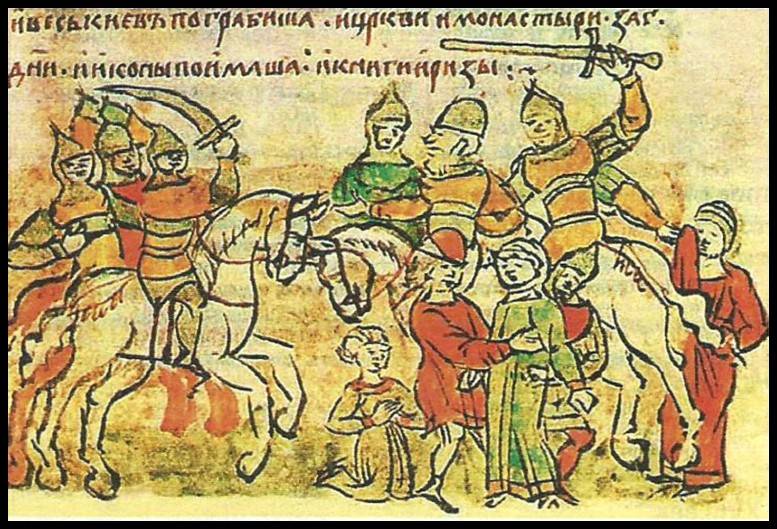
Or in 1203, in which Rurik Rostislavich ruined Kiev again, plundering St. Sophia Cathedral and the Tithe Church, and his allied Polovtsi "hacked down all the old monks, priests and nuns, and young Chernitsy, wives and daughters of Kiev drew them into their camp ".
It is hardly possible to give an unequivocal answer to the question: does the investigated body belong to the beloved national hero or is someone else buried under his name? This is a matter of faith. But there is no doubt that the epics about Ilya Muromets entered the golden fund of world literature, the name of the beloved hero will forever remain in people's memory.
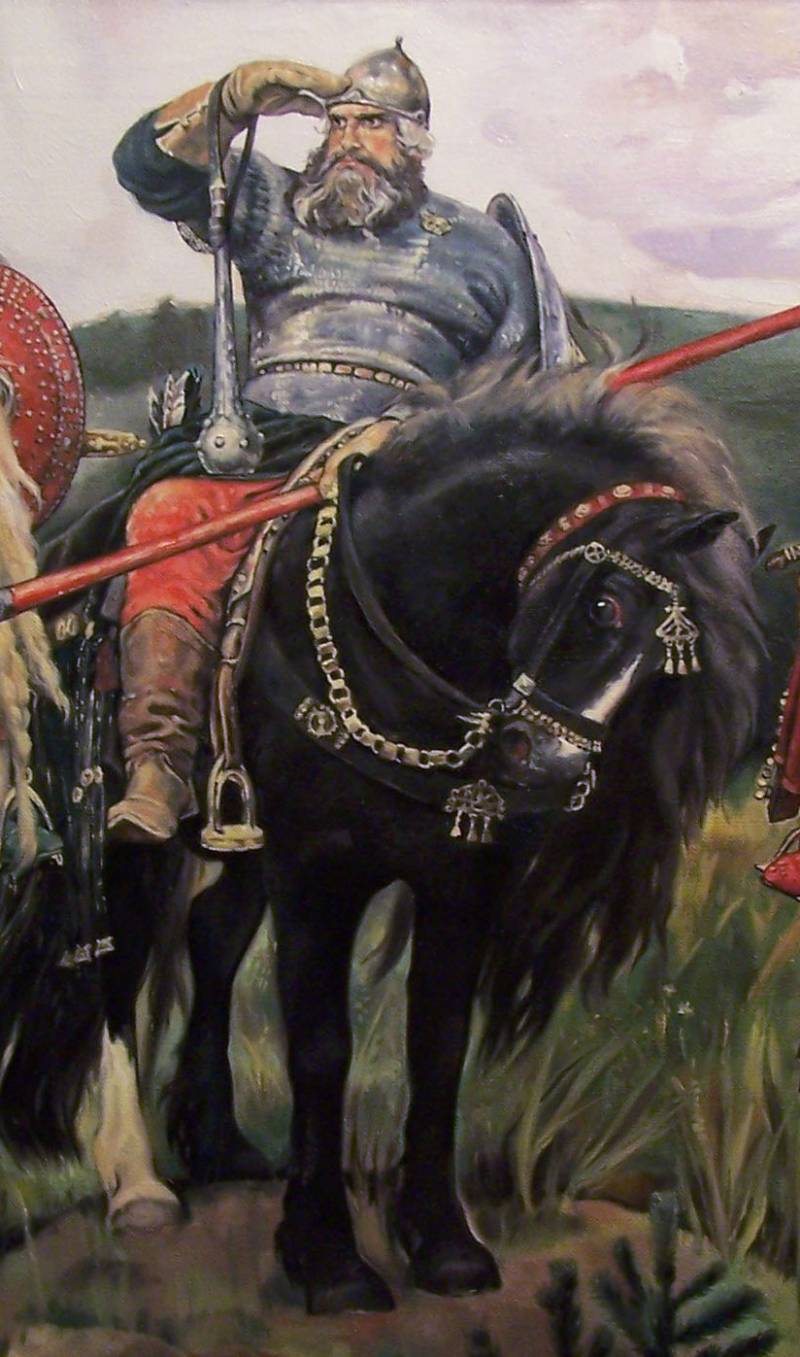
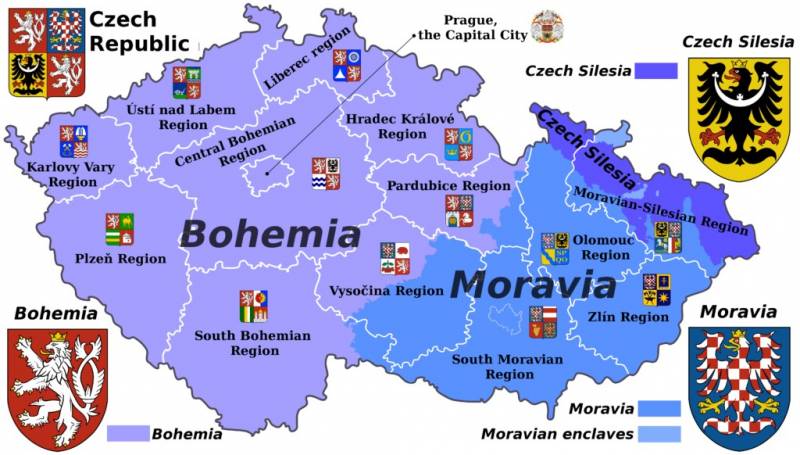
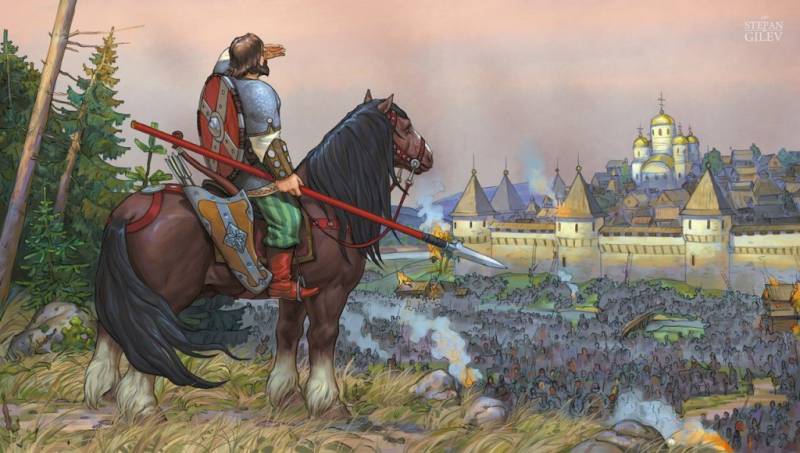
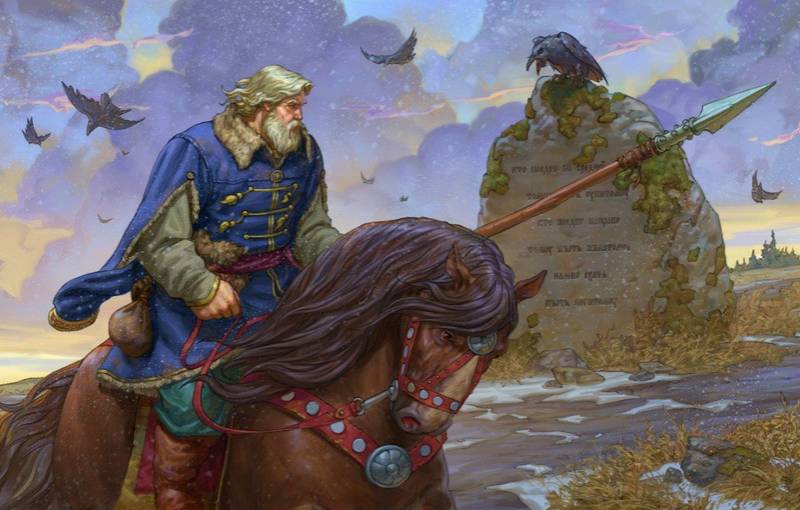
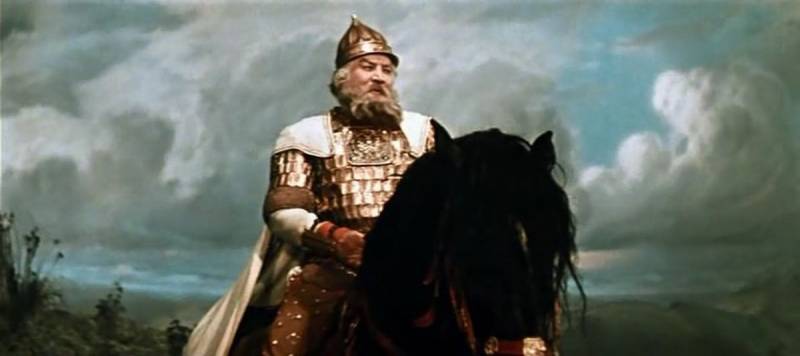
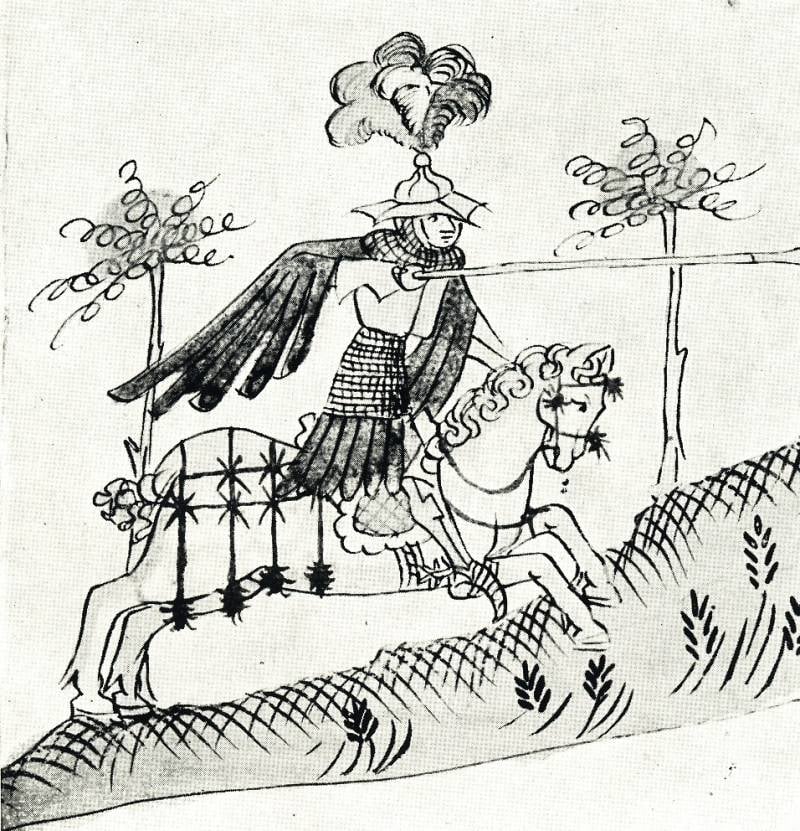
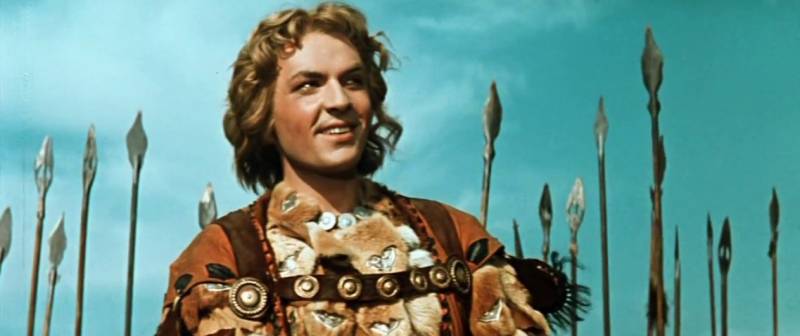
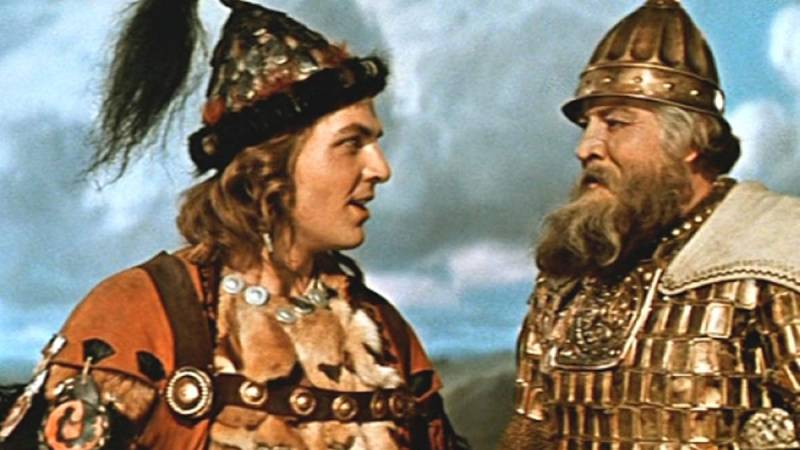
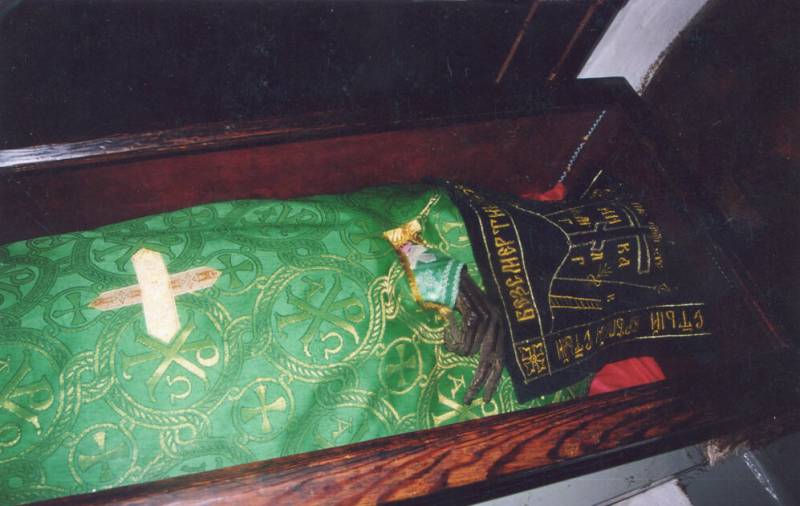
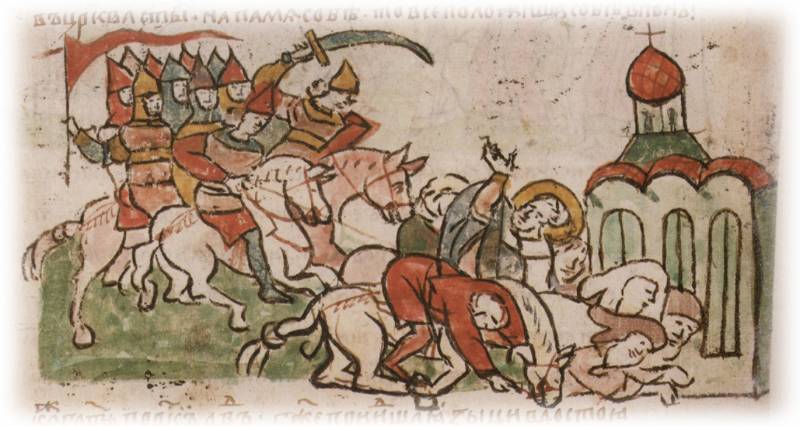
Information